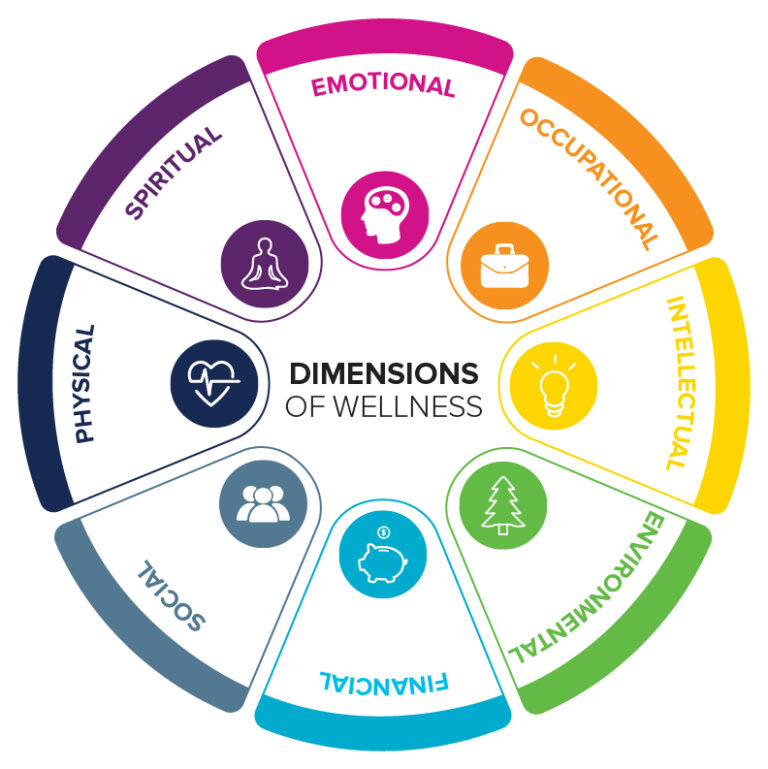Computer Science in Entertainment: Transforming How We Experience Media
Computer science in entertainment: transform how we experience media
The entertainment industry has undergone a remarkable transformation thanks to advancements in computer science. From the movies we watch to the games we play, computational technology has revolutionized how entertainment content is created, distribute, and experience. This intersection of creativity and technology continue to push boundaries and redefine what’s possible in entertainment.
Animation and visual effects
Peradventure one of the virtually visible applications of computer science in entertainment is in animation and visual effects (vVFX) The days of hand draw animation frames have mostly gigivenay to sophisticated computer generate imagery.
3d modeling and animation
Modern animate films rely intemperately on computer science techniques. Software like Autodesk Maya, blender, and cinema 4d employ complex algorithms to create realistic 3d models and animations. These tools use computational geometry, physics simulations, and render algorithms to bring characters and environments to life.
The process involve create digital skeletons (rigs )for characters, allow animators to manipulate them like digital puppets. Computer algorithms so interpolate between key poses to create smooth motion. This technology has enenabledtudios like pPixarand dDreamWorksto create progressively realistic and emotionally resonant animate features.

Source: vedantu.com
Motion capture technology
Motion capture (mmo ca) represent another significant application of computer science in entertainment. This technology use sensors or visual markers to record the movements of actors, which are so map onto digital characters. Films like ” vatar “” d the ” ” net of the apes ” s” es showcase how mocapmo capcreate convince digital performances.
The underlie technology involve complex spatial tracking algorithms, data filtering, and real time processing to accurately translate human movement into digital form. Recent advances yet allow for facial expression capture, enable digital characters to convey subtle emotional performances.
Visual effects and compositing
Visual effects in film and television rely on sophisticated computer algorithms to integrate computer generate elements with live action footage. Techniques like chroma key compositing( green screen), particle systems for elements like fire and water, and physics simulations for realistic destruction sequences all depend on computational methods.
Modern VFX pipelines use distribute computing and render farms to process the enormous computational demands of create photorealistic effects. Films like” the avengers ” r “” aStar Wars” ld be impossible without these advanced computer science applications.
Video game development
The video game industry represent one of the purest intersections of computer science and entertainment, with games fundamentally being interactive software applications design for enjoyment.
Game engines
Game engines like Unreal Engine and unity are sophisticated software frameworks that handle rendering, physics, collision detection, sound, and other core functions. These engines incorporate numerous computer science disciplines include graphics programming, artificial intelligence, and network.
Modern game engines use techniques like physically base rendering, global illumination, and real time ray trace to create progressively photorealistic graphics. The development of these technologies require deep knowledge of computational geometry, linear algebra, and optimization algorithm.

Source: askdegrees.com
Artificial intelligence in games
Ai play a crucial role in create engaging game experiences. Non player characters (nNPCs)use papathfinderlgorithms like a * to navigate game worlds, decision trees or behavior trees to determine actions, and progressively, machine learn techniques to adapt to player behavior.
Procedural content generation is another AI application that use algorithms to create game elements like landscapes, dungeons, or eve entire worlds. Games like” no man’s sky ” se procedural generation to create quintillions of unique planets and creatures from a comparatively small set of rules and assets.
Physics simulation
Realistic physics simulation is essential for modern games. Computer science techniques like numerical integration methods solve the differential equations that govern object movement. Collision detection algorithms determine when objects interact, while constraint solvers maintain physical relationships between objects.
Games like” half life: aAlex” nd “” e last of us part ii ” ” wcase how advanced physics simulation create more immersive and interactive worlds where objects behave realistically when manipulate by players.
Streaming and content delivery
The way we consume entertainment has been revolutionized by computer science through streaming technologies and sophisticated content delivery networks.
Video streaming technology
Platforms like Netflix, Disney+, and YouTube rely on complex computer science principles to deliver video content to millions of concurrent users. Adaptive bitrate streaming algorithms dynamically adjust video quality base on available bandwidth, while video compression techniques like h.264 and vp9 reduce file sizes while maintain visual quality.
Content delivery networks (cCDNs)distribute server loads across geographic regions, use route algorithms to deliver content from the optimal server location. Cache strategies alairptimize delivery by store often access content faithful to end users.
Recommendation algorithms
Streaming services employ sophisticated recommendation systems to suggest content to users. These systems use techniques from machine learning and data science to analyze view patterns and preferences.
Collaborative filtering algorithms identify patterns among users with similar tastes, while content base filtering analyze the attributes of content items. Netflix splendidly offers a$11 million prize for improvements to its recommendation algorithm, highlight the importance of these systems in the stream ecosystem.
Digital rights management
Computer science enable the protection of digital entertainment through digital rights management (dDRM)systems. These use encryption algorithms, secure key exchange protocols, and authentication mechanisms to ensure content is access simply by authorized users.
While sometimes controversial among consumers, DRM systems are considered essential by content creators and distributors to protect intellectual property in the digital age.
Virtual reality and augmented reality
VR and AR represent cut edge applications of computer science in entertainment, create altogether new ways to experience media.
VR technology
Virtual reality systems use computer science techniques to create immersive digital environments. Stereoscopic rendering create the illusion of depth by display somewhat different images to each eye. Head tracking algorithms translate physical head movements into camera movements within the virtual world, while hand tracking and motion controllers allow for interaction.
VR experience like” beat saber ” nd “” lf life: alyAlex” onstrate how these technologies can create compelling new forms of entertainment that weren’t anteantecedentsible.
Ar applications
Augmented reality overlay digital information onto the real world, require sophisticated computer vision algorithms to recognize and track real world objects and surfaces. Slam (simultaneous localization and mapping )algorithms build spatial maps of environments in real time, allow digital objects to be place convincingly in physical space.
Games like” pPokémon Go” nd apps like snSnapchatilters demonstrate the entertainment potential of arARblend digital and physical realities to create novel experiences.
Music production and distribution
Computer science has transformed how music icreatedte, produce, and distribute.
Digital audio workstations
Modern music production rely on digital audio workstations (ddays)like abAbleton LiveloLogic Proand pro tools. These software applications implement digital signal processing algorithms for effects like reverb, compression, and equalization. Time stretch algorithms allow for tempo manipulation without affect pitch, while auauto-tunelgorithms correct vocal performances.
Virtual instruments use synthesis algorithms or sample playback systems to simulate traditional instruments or create wholly new sounds. These technologies have democratized music production, allow artists to create professional quality recordings without expensive studio equipment.
Music streaming and recommendation
Services like Spotify and Apple Music use many of the same streaming technologies as video platforms, with additional features specific to music. Audio fingerprinting algorithms can identify songs from short samples, while beat detection algorithms can mechanically create playlists with smooth transitions between tracks.
Music recommendation systems analyze not lonesome listen history but besides acoustic features of songs, use machine learn to identify patterns in tempo, key, instrumentation, and other attributes to suggest new music users might enjoy.
Social media entertainment
Social media platforms have become major entertainment channels, with computer science enable new forms of content creation and sharing.
Content algorithms
Platforms like TikTok, Instagram, and YouTube use sophisticated ranking algorithms to determine which content to show users. These algorithms analyze factors like user engagement, content freshness, creator authority, and relevance to user interests.
The success of TikTok’s” for you page ” lgorithm demonstrate how effective these systems can be at keep users entertain and engage by incessantly learn from interaction patterns.
Creative tools
Social media platforms provide progressively sophisticated creative tools power by computer science. Real time video filters use computer vision to track facial features and apply effects. Automatic video editing algorithms can synchronize clips to music beats, while AI power tools can remove backgrounds or create stylistic transformations.
These technologies lower the barrier to content creation, allow users to produce entertaining content without specialized knowledge or equipment.
The future of computer science in entertainment
As computational power will continue to will increase and algorithms become more sophisticated, the entertainment industry will continue to will evolve in exciting ways.
Ai generate content
Generative AI models like GPT 4 for text, DALL-E for images, and various music generation systems point toward a future where AI may play a larger role in content creation. These systems use neural networks train on vast datasets to generate new content that mimic human creativity.
While unlikely to replace human creators wholly, these tools may become collaborative partners in the creative process, help to generate ideas, prototype concepts, or handle routine aspects of production.
Real time render advances
Technologies like NVIDIA’s DSS ((eep learning super sampling ))nd real time ray tracing are blur the line between pre rendered and real time graphics. These advances could finally enable virtual productions where final quality imagery is render in real time on set, eliminate the distinction between production and pospost-production
The Unreal Engine power virtual sets use in” the mMandalorian” epresent early steps in this direction, with computer science enable new production workflows that combine traditional filmmaking with game engine technology.
Extended reality (xXR)
The convergence of VR, AR, and mixed reality technologies points toward a future of” extended reality ” ntertainment. Computer science challenges in this area include reduce latency, improve tracking accuracy, and develop more natural interaction methods.
As these technologies mature, we may see altogether new entertainment formats emerge that don’t fit neatly into exist categories of games, films, or experiences.
Conclusion
Computer science has basically transformed the entertainment industry, enable new forms of creativity, distribution, and audience engagement. From the algorithms that power stream recommendations to the rendering techniques that create fantastical worlds, computational technology has become inseparable from modern entertainment.
As these technologies continue to evolve, we can expect eventide more innovative applications that push the boundaries of what’s possible. The future of entertainment will be will shape by advances in artificial intelligence, real time rendering, will extend reality, and other computational fields heretofore to will emerge.
For those interested in the intersection of technology and creativity, the entertainment industry offer fascinating opportunities to apply computer science knowledge to create experiences that delight, move, and inspire audiences worldwide.



